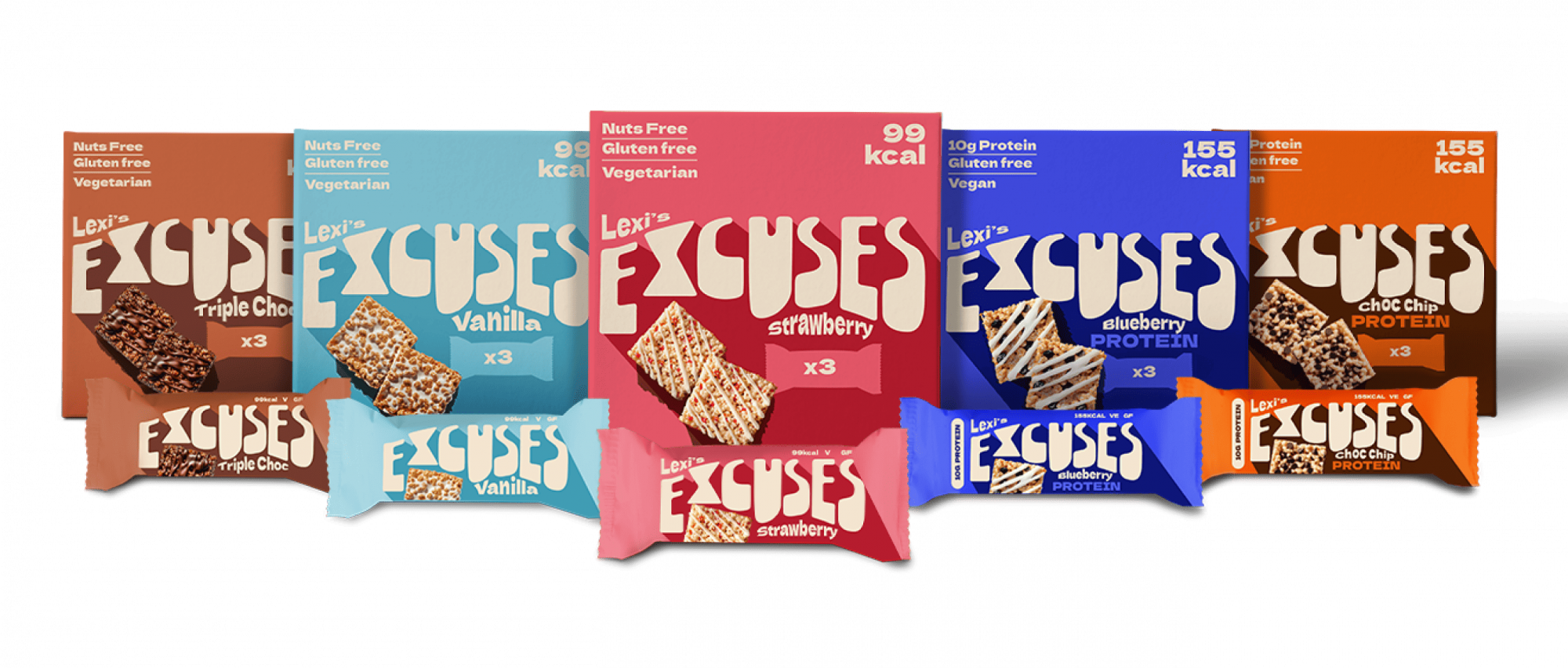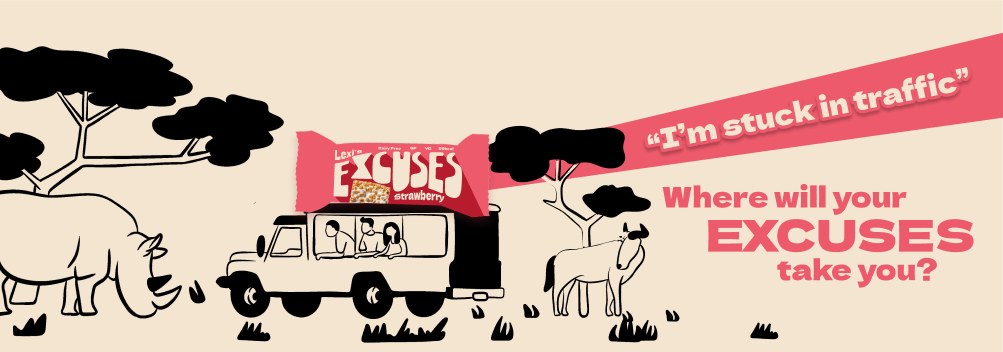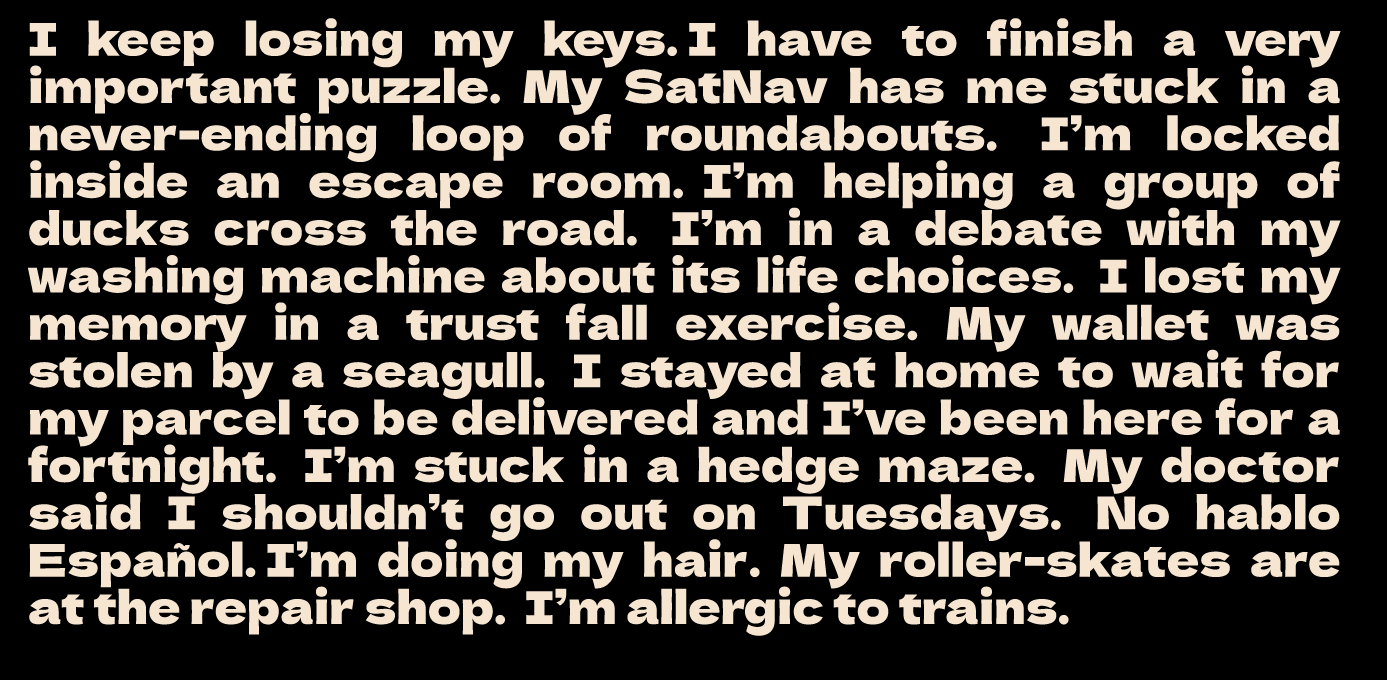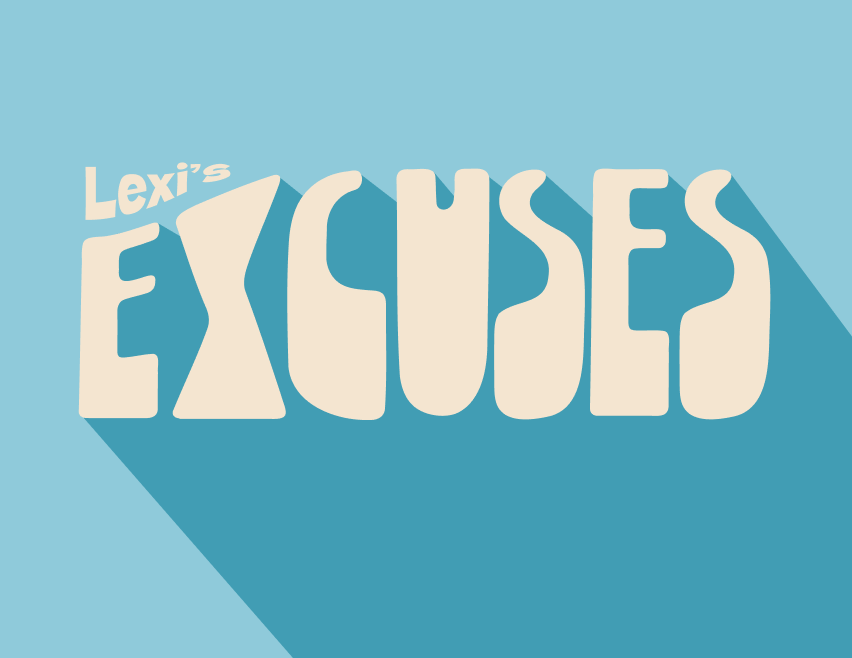26 August 2025
Do brands need to get more serious as they grow up?
Aleksandra Milewicz
Brand Strategist
Lessons from Lexi’s Excuses
Earlier this year we rebranded Lexi’s, a puffed rice snack in the free-from category. In the process, we hit a familiar crossroads. Rebrands often tempt brands to smooth out their edges – to go sleeker, cleaner, more grown-up. Take Costa, which swapped its eccentric ads for wholesome ‘Made with Heart’ moments. Or Airbnb, which traded its scrappy start-up energy for polished, big-tech aesthetic. But does scaling up have to mean toning yourself down?
We decided that for Lexi’s, the answer was no. What it needed was the opposite: to lean harder into its playful side, reaching an overlooked audience of people who care about their health but don’t identify with the all-or-nothing fitness messaging.
The brand became Lexi’s Excuses. A cheeky, irreverent identity that invites people to reject the mundane, whatever that looks like for them. Not only did we not sand down the quirks – we added a few new ones into the mix.

Rebranding with character
Lexi’s brief piqued our interest from the start. In the snack aisle, protein brands were calling out to gymgoers, and other free-from treats were leaning into clean eating and family-friendly positioning. But one audience group was being overlooked. The growing ‘soft exercise’ crowd who wanted a gentle lift throughout the day. People who’d rather walk to yoga than sprint to CrossFit. People who try to eat healthy but also love a bit of cake.
Lexi’s was already the good-for-you choice: gluten-free, nut-free, kosher, low-cal, vegetarian. Our goal? Make it feel a little bit naughty, too.
Here’s how we approached it – and how other brands can, too.

Embrace the rebellious spirit
There’s a common fear in branding that showing too much edge will scare people off. The logic goes: aim for positive catch-all messaging, and you won’t alienate anyone.
And yet, some of the most culturally magnetic brands of the decade are the ones that embraced rebellion at scale. Who Gives A Crap didn’t drop the toilet humour as it went global, and Oatly never stopped parodying its own marketing team, even as it became the plant-based category leader.
We felt Lexi’s needed to show its playful side. ‘Excuses’ gave it permission to be cheeky, poking fun at wellness clichés and joyfully rejecting snacking guilt. In a category that’s often associated with discipline and sacrifice, a little rebellion was exactly what we needed to cut through.
Build brand mythology from inside out
Lexi’s was named after its founder who sold the brand to the Serious Sweets Company. A name that could easily have been stripped away in a rebrand. But we decided to lean into the intrigue. Who’s Lexi? Why does she love making excuses? The mystery became a springboard for an entire universe of brand storytelling, with each excuse more surreal than the last.
For other brands, mythology-building might manifest in product names (like Ben & Jerry’s music-inspired ice cream names), packaging (like Liquid Death’s can artwork), or rituals (like Apple’s iconic product launches). Eventually, these brand elements can take on a life of their own and start to carry meaning beyond the product itself. When done well, they transform a brand from something people buy, into something people care about.

Protect your eccentricities
Lexi’s tone of voice is probably best described as ‘a little odd’. Copy and packaging are layered with Easter eggs that hint at a wider world behind the brand – like the long list of excuses that get increasingly stranger, from ‘Something came up’ to ‘My goldfish gets anxious’. It’s the sort of humour that feels like an inside joke even to first-time customers, because it’s both peculiar and universal.
The eccentricity gives Lexi’s distinct personality, but it also draws people in. You don’t need to ‘get’ every joke to enjoy the brand. The sense that there’s more beneath the surface stirs curiosity – and at the end of the day, that’s what the brand is all about.

Stay weird (if you want to)
A rebrand is more than a fresh logo or a tidy colour palette – it’s a chance to rethink your strategy, sharpen your story, and truly speak to your audience. Done right, it brings clarity and confidence without flattening the quirks and personality that made people fall in love with the brand in the first place. The best rebrands don’t erase what’s special – they amplify it, keeping loyal fans hooked while catching the eye of those who haven’t discovered it yet.
